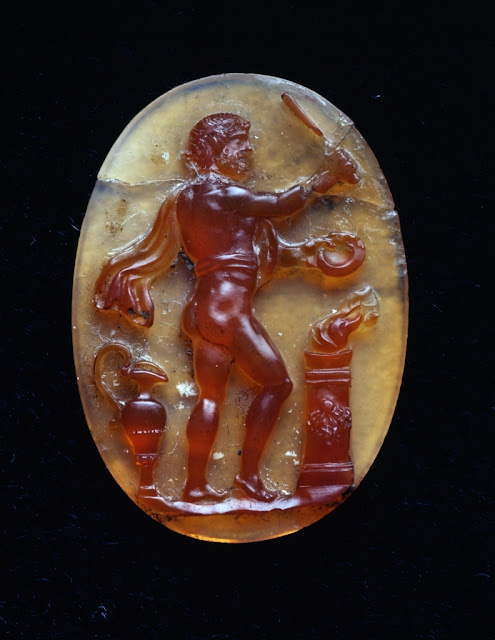Intaglios: Carved Gemstones of the Ancient World
Intaglios: Carved Gemstones of the Ancient World.
The classical tradition of carving semi-precious gemstones was adopted from the ancient Near East although it was also used by the Indus Valley civilization as well. Flat ring types were developed from cylinder seals used to imprint documents in Mesopotamia, Assyria, and eventually the Minoan world including parts of Greece and Cyprus in the Bronze Age palace societies of Crete and Mycenae. The design would be cut into the flat surface of a stone using a series of increasingly delicate abrasive powders from harder stones like emery (also known as corundite), a dark granular rock mined in ancient times on the Greek island of Naxos, in conjunction with a hand-drill, probably set in a lathe. Although magnifying lenses existed in the ancient world, scholars are in disagreement as to whether they were used for gem carving because of speculation about their quality and potential for distortion. Carved gems are often called "intaglios", from the Italian verb "to cut". In Hellenistic times, the art form evolved from an engraved design for practical use to crafting images in relief to be used as personal adornment. Prized artists used geological layering of the stones to bring out the image against a contrasting background. Some artists were surprisingly young. A Roman-era tombstone from Sardis records the age of death of a young gem-cutter at only 18. Recovered gravestones have also indicated, by their names, that most were Greek even in Roman times.
Amethyst intaglio of Roman Emperor Caracalla with inscription in Greek letters O IIETPOC, 212 CE. A cross was added during the Byzantine period to transform the portrait into that of St. Peter. From the treasury of Sainte-Chapelle now in the Cabinet des Médailles, Paris, France. Image courtesy of Wikimedia Commons contributor, Marie-Lan Nguyen.





Comments
Post a Comment